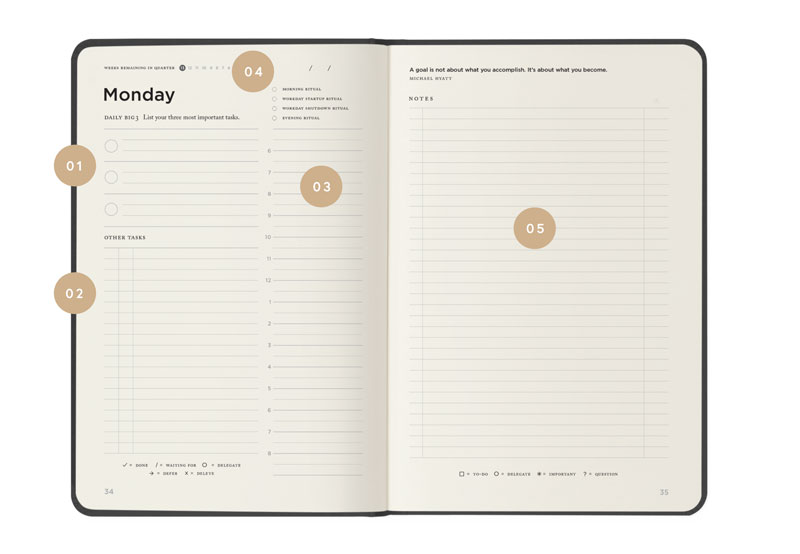The side lights dim in the auditorium and the speaker walks on stage. As they are introduced you notice something different about them. The way they are dressed commands your attention. They start to speak and you are quickly drawn into a powerful story. There is drama, tension, and intrigue.

Soon you are tracking with them. You can relate to their struggles and you marvel at their tenacity. Soon they share how they overcame obstacles and found a way to prosper. And then they do something amazing. They offer to share their secret with you.
You want to know more. You’ve been where they are, you’ve fought the battle, but you haven’t found a solution. As the speaker goes on, they mention they have a book and a step by step course of action you can take to change your own life.
In your mind, you know one thing. You’re not leaving until you have the answer. You pick up the book, follow the instructions, and your life changes.
Have you been there? Have you heard that presentation? Has your life changed?
My name is John Richardson and I’ve been part of a public speaking organization called Toastmasters International for over fifteen years. In that time I’ve heard hundreds of speeches and presentations, from short five-minute monologues to ninety minute keynotes. Yet in that time I’ve only heard about a dozen, truly motivational presentations. Ones that change your life.
As a speaker, I’ve always wanted to be able to give that kind of presentation. To reach deep down inside and share from the heart. To actually be able to motivate people to change their lives for the better. In my journey, I’ve become a student of speaking and motivational styles. I’ve tried many different things and failed many times, yet a few things emerged that I would like to share with you today. If you are a speaker and want to change the world, you’ll definitely need SPARK.
S.P.A.R.K is…
- Senses: To build rapport with your audience you’ll need to activate their senses. My speaking friend, Sheryl Roush is a master at this. She starts way before the presentation begins. She knows that her audience will have three major learning styles. There are…
- Visual learners. They intake information by what they see;
- Audio learners. They intake information by what they hear; and
- Kinesthetic learners. They intake information by what they feel.
Sheryl always arrives at least an hour early. She has bright colored visuals in the form of PowerPoint slides or flip charts. She puts on background music for the audio people as they arrive. She has handouts ready for her kinesthetic guests. But Sheryl goes even further by heating up Chocolate Chip cookies and walking them through the room to add a pleasant aroma. She even adds powerful words and numbers to her slides for the analytics.
Sheryl’s presentations are a sensory joy. She always dresses in bright colors and has a very professional and commanding presence. You know right away who the speaker is. No matter what your learning style is, you’ll come away impressed by her speech.
- Purpose: People need to know why you are speaking to them. They need to know your purpose. Simon Sinek in his masterful TED speech suggests that we Start with Why. Most speakers start with what or how, but if you can get to the core, and share your why, you’ll have a chance to really impact your audience.
When you share your why, it affects the part of the brain that deals with emotion. This is a deep set part of the brain can really motivate your audience, yet that part of the brain doesn’t work with words. Your audience may be motivated to action but may not be able to formulate words to describe it.
- Act it out with stories: The best speakers I know are really actors in disguise. Their presentations are almost like going to a play. They come out from behind a podium and share powerful stories with emotion and action. There is drama and intrigue as they share powerful action words with passion. Their vocal variety is enormous.
Stories like this are what will truly bring your audience in. They need to include all the senses. Your audience needs to see, hear and feel what is going on.
- Relate: Stories should relate to your particular audience. Make them conversational and personal. Show us the dark days. Show us your failures. Be real. Almost all of the truly motivational speeches take us into the pain and agony of a situation and contrast it with a solution or new reality. The greater the contrast, the greater the audience impact.
Nancy Duarte illustrates this concept powerfully in her video post on Presentation Contrast. Contrast is like a sine wave, alternating between what is and what can be. As Nancy shares, if you truly want to change the world, take an idea, add contrast, and share it with others.
- Knowledge: The best presentations offer something new and unique. There is nothing cliché about them. They offer a take-away, whether that is a handout, book, or video. The audience member has a chance to gain further knowledge. Authors have a definite advantage here. Having a book to sell or a seminar to attend, is a great way to effect change.
Creating a powerful and motivating presentation takes a lot of time, effort, and practice. A great place to start is a local Toastmasters club where you can learn speaking and leadership skills and be able to practice and refine your speech. If you truly want to get up to speed quickly, Ken Davis and Michael Hyatt’s SCORRE conference can teach you powerful presentation skills in just a few days. You’ll be ready for the platform in no time.
Disclosure of Material Connection: Some of the links in the post above are “affiliate links.” This means if you click on the link and purchase the item, we will receive an affiliate commission. Regardless, we only recommend products or services we use and believe will add value to our readers. We are disclosing this in accordance with the Federal Trade Commission’s 16 CFR, Part 255: “Guides Concerning the Use of Endorsements and Testimonials in Advertising.








